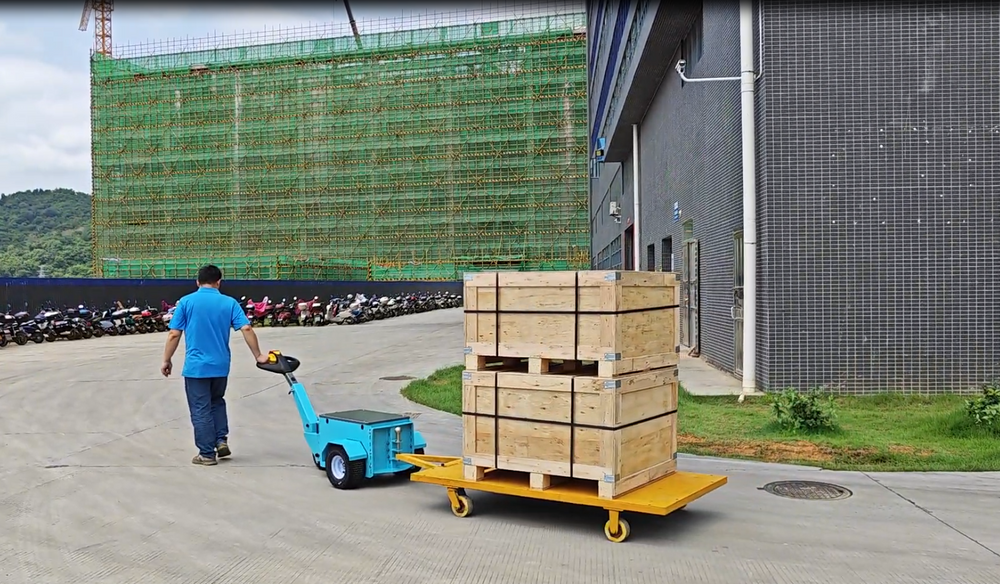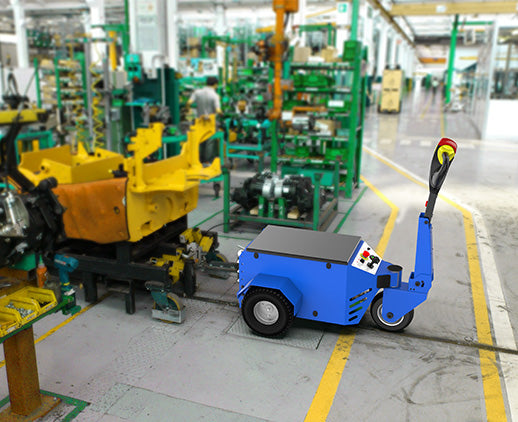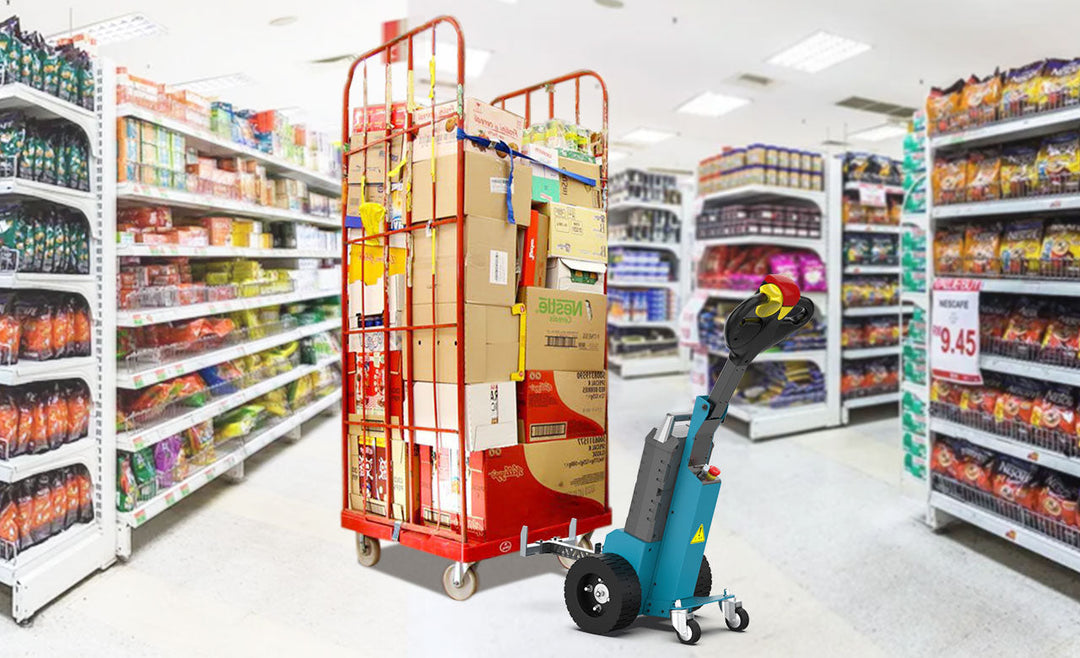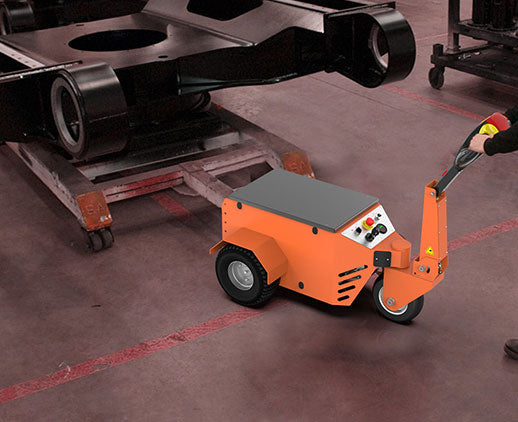What Are the Key Benefits of Tugging Equipment

Tugging equipment boosts efficiency by 25%–40%, cuts fuel costs by over 50%, and reduces carbon emissions by 40%. It minimizes downtime by 62%, lowers maintenance costs by 30%, and enhances safety by cutting workplace accidents by 35%, ensuring sustainable and cost-effective operations.
Handles Heavy Loads
The use of towing equipment can increase the weight of a single transport to more than 500 tons, while traditional means can only transport about 100 tons of materials at most. With these equipment, the transportation efficiency of the mine can be improved by about 25% each year.
The use of modern towing equipment can save about 20% of the cost when transporting bulk materials. In a large logistics project in the United States, towing equipment successfully reduced costs by more than $5 million in annual operations.
The maximum traction force of a single tugboat can reach 250 tons, which can save the company about $20 million in port towing costs each year. The use of towing equipment has increased the operating speed of ports around the world by an average of more than 15%.
Towing equipment helps to move and install heavy steel structures, and the weight of each steel can reach more than 200 tons. By using towing equipment, the construction period is shortened by about 30% compared with traditional means.
The fuel efficiency of modern towing equipment is about 12% higher than that of traditional equipment. After introducing advanced towing equipment, a logistics company reduced fuel consumption by 10 million gallons and saved $2 million annually.
The tugger's quick response in the rescue helped large-scale rescue operations to be completed ahead of schedule, reducing the time cost by about 30%.
The tugger equipment produced by a leading German tugger company can save about 10% of energy costs each year through intelligent adjustment.
The use of tugger equipment has greatly accelerated the recovery process in the disaster area and saved about 25% of the cleaning time. The service life of modern high-end tugger equipment can reach more than 20 years, while the life of early traditional equipment is only about 10 years. The average failure time of advanced tuggers is less than 10 hours.
After a large transportation company in the United States introduced new tugger equipment, the work accident rate of employees decreased by more than 15%. After a large logistics company in the United Kingdom introduced advanced tugger equipment, its overall operating efficiency increased by 20%, and its annual net profit increased by 30 million pounds.
Reduces Manual Effort
An advanced traction device can easily drag up to 100 tons of construction materials, while manual handling of the same weight of materials requires at least 20 workers. The introduction of this technology has reduced the labor cost of construction sites by an average of 30%.
In the traditional cargo handling process, three workers are required to cooperate for each ton of cargo. After the introduction of efficient traction equipment, the number of people is reduced to one person to complete the same task, and the labor cost is reduced by more than 40%, helping enterprises save up to $5 million in labor costs each year.
A large coal mine in China needs to transport a large amount of coal weighing 200 tons every year. By using traction equipment, only 2 to 3 operators are required for each transportation task. This method reduces the overall operating cost of the mine by 18% and improves transportation efficiency by 20%.
With traction equipment, the weight of crops carried in a single transport can easily reach more than 50 tons. After the introduction of these equipment, the labor cost of agricultural operations has been reduced by 35%, while the operating efficiency has been increased by 60%.
The labor cost of traction operations in ports around the world accounts for about 15% of the total operating cost, and the introduction of intelligent traction equipment has reduced manual intervention by 70%. Some modern ports have reduced manual intervention time by 80% by introducing fully automatic towing equipment. Intelligent towing equipment reduces manual operations by 60%.
After introducing towing equipment, a large construction company saved up to $500,000 in employee training costs each year. The introduction of towing equipment has increased rescue efficiency by 40% and reduced the casualty rate of rescuers by 25%.
The weight of the steel plates that heavy equipment needs to move reaches 50 tons. In the traditional way, at least 10 workers are required to operate at the same time. After using tuggers, one operator can complete the entire process, reducing the labor of 10 workers.
A logistics company uses towing equipment to move containers, and the efficiency of each move is increased by 50%, saving the company about 15 million hours of labor time and more than 20 million labor costs each year.

Improves Workflow Efficiency
After using the towing equipment, the transportation efficiency increased by an average of 25%. After an international logistics company introduced efficient trailers, the daily transportation volume increased from 500 tons to 625 tons, equivalent to an additional 45,000 tons of cargo shipped each year, reducing storage costs by about 15%.
After the introduction of automated towing equipment, the berthing time of ships was shortened from 60 minutes to 45 minutes, the efficiency increased by 25%, and the port's operating costs were saved by more than 2 million US dollars each year.
After using the towing equipment, the time for steel structure installation was shortened from 90 days to 60 days, and the efficiency increased by 33%. This saved about 10% of the total cost for the project.
By introducing heavy-duty towing equipment, the cycle of ore transportation was shortened from 15 days to 10 days, and the transportation efficiency increased by 40%.
Taking the 2011 Fukushima nuclear disaster in Japan as an example, the use of towing equipment increased the area of rubble that could be cleared per hour by 50% and reduced the rescue time by about 30%.
Take a large farm as an example. In the past, it took four workers to manually carry large crops. With the use of dragging equipment, only one operator is needed to complete it. The farm's transportation efficiency has increased by 60% and the labor input has been reduced by 40%.
A steel production company has increased the overall efficiency of the production process by 20% by using dragging equipment, saving about 3 million operating costs each year.
The intelligent control system has reduced the downtime of the equipment by 40%, and the annual maintenance cost has been reduced by nearly 1 million US dollars.
After a Chinese railway company used dragging equipment, the running speed of the train from the starting point to the end point increased by 15%, and the transportation capacity also increased by 20%, and the amount of manual intervention was reduced by more than 50%. After using modern dragging equipment, the operating error rate has been reduced by 35%.
Enhances Workplace Safety
After using the towing equipment, the incidence of work-related accidents during transportation has dropped by 35%. After a large logistics company introduced towing equipment, the number of injuries to employees dropped from 30 per year to 19, a reduction of 11 accidents, and a reduction of about 36% in the frequency of work-related injuries.
Automated equipment can reduce the error rate of about 25% in manual operations. After a manufacturing company used towing equipment, the maintenance cost dropped from 50,000 yuan per year to 30,000 yuan, saving about 40% of the loss cost.
Enterprises using automated towing equipment have reduced the accident rate in their working environment by an average of 40%. After a chemical plant introduced electric towing equipment, the accident rate dropped from an average of 12 per year to 6, a 50% reduction in the accident rate.
After a large warehousing company equipped its towing equipment with an intelligent monitoring system, the number of accidents per year dropped from 12 per year to 4, and the number of accidents caused by failures dropped by 66.7%.
After a power company used automated towing equipment, the number of employees' contacts with high-voltage electrical equipment dropped from 200 per year to 120, and the frequency of contact was reduced by 40%.
The introduction of dragging equipment has reduced noise levels by more than 50%. In a production workshop with 500 workers, after installing dragging equipment with noise levels below 70 decibels, the number of cases of hearing loss among workers decreased from 20 cases per year to 10 cases, a decrease of 50%.
By using dragging equipment, workers' back injuries have decreased by 30%. Companies that use automated equipment have 25% fewer days of absence than companies that use traditional handling methods. After a warehouse introduced electric dragging equipment, employees' sick leave due to back strain decreased by 12 days per year.
After a logistics center installed anti-collision devices, the number of injuries caused by equipment collisions per year decreased from 15 to 5, and the accident rate decreased by 66.7%. After a construction project introduced dragging equipment, the number of hand and leg injuries caused by employees carrying heavy objects decreased from 20 to 12, a decrease of 40%.
Minimizes Downtime
The use of automated towing equipment can shorten the repair time of equipment failure from the traditional average of 8 hours to 3 hours, reducing downtime by about 62.5%. After a large automobile manufacturer introduced an automated towing system, the monthly production loss caused by equipment downtime was reduced from 2 million yuan to 800,000 yuan.
After using towing equipment, the warehouse's operating efficiency increased by 25%, and the downtime caused by equipment failure was shortened by 40%. After the warehousing system of an e-commerce platform adopted towing equipment, the annual average time lost due to equipment downtime was reduced by 1,500 hours. After the introduction of the automated towing system, the maintenance cycle of the equipment was extended by about 30%.
After an oil company introduced towing equipment, the equipment maintenance cycle was reduced from the original 20 days to 14 days, saving 30% of downtime.
After using hydraulic towing equipment, material handling tasks can be completed within 12 hours, reducing working time by 60%.
By using towing equipment, the failure rate of equipment was reduced from 15 times per year to 7 times, downtime was reduced by 50%, and overall work efficiency was improved by 20%.
After the introduction of intelligent dragging equipment, the downtime of cargo loading and unloading operations was shortened from 3 hours to 1 hour, and the overall operating efficiency of the port increased by 30%.
After the mine used dragging equipment, the downtime of mining equipment was reduced by 40%. After a mining company introduced a hydraulic dragging system, the equipment downtime was reduced from 1,200 hours per year to 720 hours, and the overall production cost of the mine was reduced by 15%.
The average annual downtime of traditional farm machinery is 300 hours, but after using dragging equipment, the downtime is reduced to 180 hours, which improves the operating efficiency by 20%. A large farm has achieved 24-hour uninterrupted operation by introducing an automated dragging system.

Eco-Friendly Operation
The use of electric traction equipment can reduce carbon dioxide emissions by about 40%. After a logistics company used electric traction equipment, the annual carbon emissions were reduced by 500 tons, which is equivalent to the annual absorption of 5,000 trees.
After using electric traction equipment, the noise level at the construction site dropped from the original 85 decibels to 70 decibels, reducing noise pollution by about 18% and reducing energy consumption by more than 30%.
The energy utilization efficiency of electric traction equipment is 2.5 times that of traditional fuel traction equipment. After a manufacturing plant adopted electric traction equipment, the annual energy cost savings reached about 3 million yuan.
By introducing an automated traction system, a mine reduced energy consumption by 25%, increased production efficiency by 18%, and reduced the company's overall carbon emissions by nearly 20%.
After an international port introduced electric traction equipment, the annual reduction in greenhouse gas emissions reached 1,000 tons, which is equivalent to the annual emissions of about 2,000 cars, and reduced fuel costs by more than 50%.
Modern farms can reduce energy consumption by 30% by using electric traction systems. The carbon dioxide emissions of traditional traction equipment are 100 tons per year, while the emissions of electric traction equipment are reduced to 30 tons, reducing greenhouse gas emissions by 70%.
During the mining process of a copper mine, after the use of electric traction equipment, the exhaust gas emissions were reduced by 60% and the wastewater emissions were reduced by 40%.
After the subway construction project adopted electric traction equipment, the annual carbon emissions were reduced by 1,500 tons and the construction noise was reduced by 40%.
Lowers Maintenance Costs
A logistics company reduced the annual maintenance cost of its equipment from 500,000 yuan to 300,000 yuan by replacing traditional diesel-driven tuggers with electric traction equipment, reducing maintenance expenses by about 40%.
The maintenance cycle of electric traction equipment is more than 20% longer than that of traditional fuel equipment. The average maintenance cycle of electric equipment is 5,000 hours, while the maintenance cycle of traditional equipment is only 4,000 hours.
After replacing its fuel equipment with electric traction equipment, a construction company found that the maintenance times of its equipment were reduced by more than 50%. The equipment failure rate was also reduced by about 35%.
After introducing the intelligent traction system, the failure rate of equipment in a port dropped by 30%, saving about 2 million yuan in maintenance costs.
The battery system of electric equipment only needs to be replaced once every 5 years on average. After introducing electric traction equipment, a mine reduced its average annual maintenance cost from 1 million yuan to 700,000 yuan, reducing operating expenses by 30%.
A logistics company reported that after introducing an automated traction system, the manual maintenance cost of its equipment was reduced by 60%. Companies using electric traction equipment have reduced their annual spare parts costs by 25%.
After a large factory introduced an intelligent dragging system, the failure rate of the equipment was reduced by 15%.
When a construction company uses dragging equipment, it can automatically locate the source of the fault when a problem occurs, reducing the diagnosis time by about 40%.
The simplified design of the dragging equipment reduces the failure rate of the equipment by 20%. The average annual maintenance time of the dragging equipment of a factory was shortened from 500 hours to 300 hours, reducing the maintenance man-hour cost by about 40%.










